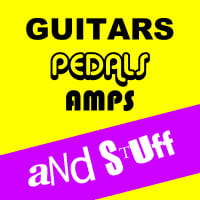
Guitar effects for bass guitars offer a spectrum of sonic possibilities, allowing bassists to explore and expand their musical horizons. Traditionally associated with electric guitars, effects pedals are increasingly being tailored to suit the unique characteristics of bass guitars, enhancing their sound in various ways.
One commonly used effect for bass guitars is the “overdrive” or “distortion” pedal, which can add grit, sustain, and an edgier tone to the bass sound. This effect can be subtle, providing a warm growl, or more aggressive, delivering a heavily distorted sound ideal for certain musical styles.
Another popular effect is the “chorus,” which thickens the sound by doubling the signal slightly delayed and modulating its pitch. Chorus can make the bass sound wider and more textured, adding depth and richness to the overall tone.
“Bass-specific EQ pedals” are also prevalent, allowing precise control over frequencies to shape the bass sound. These pedals can emphasize low-end frequencies for a deeper, booming tone, or sculpt the midrange and treble for clarity and punchiness in a mix.
Enveloping effects like “envelope filter” or “auto-wah” respond dynamically to the player’s attack, altering the filter to produce funky, expressive sounds. These effects are commonly used in funk, R&B, and fusion music styles.
Additionally, “octave” and “synth” pedals offer the capability to produce sub-octave tones or simulate synth-like sounds, providing bassists with the ability to create unique textures and expand the instrument’s sonic range.
Moreover, “compression” pedals are invaluable for controlling the dynamics of the bass, ensuring consistent volume levels and enhancing sustain, which is especially beneficial in genres requiring tight, punchy basslines.
Experimenting with a combination of these effects, bassists can sculpt their desired tone, add depth, create textures, and explore innovative sounds, ultimately expanding the creative possibilities of the bass guitar in various musical contexts.

